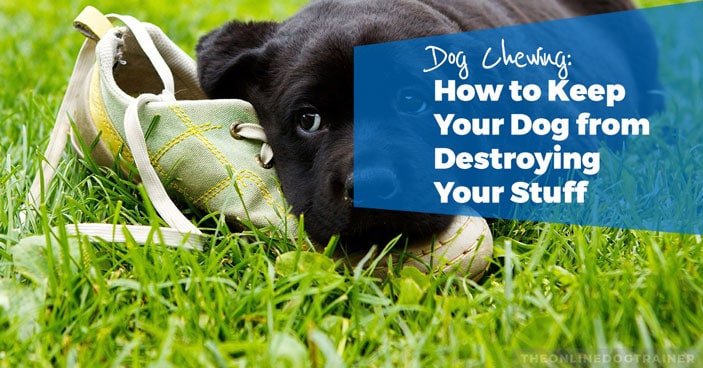
If you’ve ever had a dog…
- Chew up your brand-new shoes
- Gnaw on your furniture
- Tear up your carpet
…you’re not alone.
One of the most common behavioral issues dog owners come across is chewing.
(See how I've helped train over 88,000 dogs- many of which had a bad chewing habit here! Or, if you have a puppy, make sure chewing doesn't become a problem with my Puppy Coach training program!)
This makes sense as dogs have a natural instinct to gnaw on things.
In fact, dogs should be given opportunities to chew as the behavior helps keep their teeth clean and provides them with constructive entertainment.
But, why is it that your dog always seems to pick the wrong thing to chew, i.e., your brand-new bedroom slippers.
Or more importantly, how do you correct the behavior so your dog knows the difference between what he is allowed to tear apart and what should be left untouched?
Keep reading to find out…
Why Dogs Chew Stuff
First and foremost, it’s important to point out the reasons behind why your dog might be chewing up your things.
Until we know the root cause of the problem, we won’t be able to put training in place to fix it.
As we mentioned above, dogs have a natural instinct to chew.
That being said, there’s often a bigger underlying issue as to why your dog feels the need to eat your coffee table.
It’s likely that your pup fits into one of the following 3 categories…
REASON ONE: Your Dog Is a Puppy Who Needs to Chew
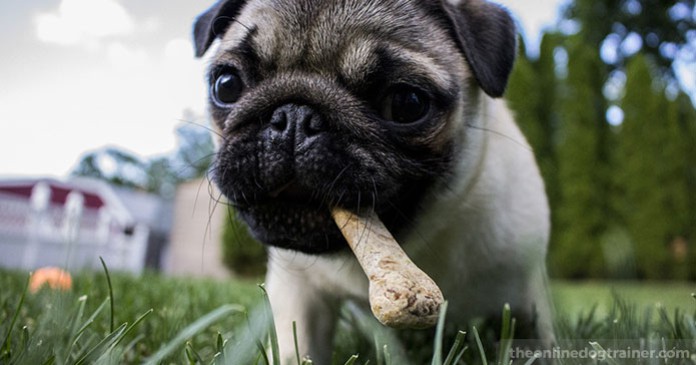
If you have a young puppy, he’s going to want to chew things.
The biggest reason: teething.
Puppies start getting teeth around the age of 16 weeks. And, it’s possible that they will continue to teeth until they are 7 to 8 months old.
Knowing this, it’s vital to prepare for this uncomfortable phase in your pup’s life. Even more so, it’s important to be compassionate towards your dog during this painful time.
In order to prevent your puppy from chewing on inappropriate items and learning bad behavior, here’s what I recommend…
#1 – Provide your pup with adequate chewing toys.
The best thing you can do for a puppy is to ensure he has enough “puppy appropriate” things to chew.
I personally recommend a variety of materials so your dog can select which he prefers. For example…
- Hard rubber toys such as a Kong.
- Rope toys, just a length of rope with a few good knots in it.
- Wooden toys. (I often I will select sticks or pine cones that are cheap and safe.)
- Softer material like a dish towel, damp and a knot tied in it.
- Large natural Cannon Bones. (Ensure they are solid and safe. Always avoid things like chicken bones that splinter and break.)
- Bully sticks or similar chew “treats.”
#2 – Learn the skill of redirection.
Redirection is a training technique in which you redirect your dog’s bad behavior (chewing on your table leg) to an appropriate behavior (chewing on a bone).
Remember, your dog is a puppy. It’s likely that he really doesn’t know better when it comes to chewing up your stuff.
Help teach him what’s acceptable to chew by calmly removing him from the inappropriate item he is chewing and transferring him to a toy or a treat he can chew instead.
#3 – Keep your stuff off the floor.
Last but not least, I recommend the most common-sense habit—keeping your stuff off the floor.
A young puppy isn’t going to be keen on what’s his to chew and what’s not.
Therefore, it’s your responsibility as a puppy parent to ensure your dog isn’t able to get into things that he shouldn’t.
It’s much like having a new baby in your home.
You wouldn’t leave dangerous items on your floor for a baby to reach. You also shouldn’t trust that your pup knows the difference between what is safe and not safe to chew/play with.
REASON TWO: Your Dog Hasn’t Been Trained Properly
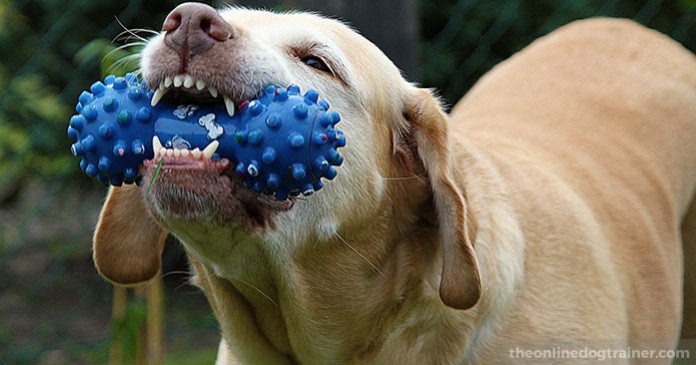
The second reason your dog might chew things is simply because he wasn’t trained properly.
The good news…it’s never too late to teach your dog a new trick.
Here’s what I recommend trying if you’ve never taught your dog the difference between what’s ok and not ok to chew.
#1 – Timeouts
Timeouts are a very kind way to help your dog understand when he’s doing something naughty.
Here’s how it works…
- You catch your dog chewing on your slipper.
- Calmly walk up to your dog, remove the slipper from his mouth, and tell him no.
- Put the slipper back on the floor.
- If your dog goes back to chewing on the slipper, repeat the process, and then calmly walk him to his crate.
- Leave your dog in his crate for 3 to 5 minutes,and then let him free.
- Every time he goes back to chew the slipper, place him back in his crate for a few minutes.
Dogs are brilliant animals, and eventually your pup is going to realize that chewing on the slipper (or whatever object it might be) will warrant him a few minutes in puppy jail.
#2 – Reward good behavior.
This one is very simple and straightforward.
If you walk into a room and your dog is chewing his bone instead of your carpet, take a minute to reward him.
You could simply give him a nice pat or a cookie.
When you’re just starting out, it’s ok to go a little overboard with praise.
However, as your dog gets the hang of what he should be chewing, back off on giving praise/treats.
#3 – Keep your dog in eyesight.
Dogs are so smart that they’ve been known to try and hide their naughty behaviors from their owners.
For example, your dog might know that he’s not allowed to eat your stilettos. But, if the urge to chew one up hits, he may sneak upstairs into your bedroom when you’re not looking.
Unfortunately, that will leave you to walk into the aftermath of your dog’s chewing. And, because you didn’t actually catch your pup in the act of chewing, it’s not really fair or possible to scold or punish him.
The best way to stay on top of your dog’s naughty chewing behavior is to keep him contained to the rooms you are in.
You can do this by shutting bedroom doors, installing baby gates, or keeping your pup on a short leash.
Doing this will allow you to keep tabs on your dog so that, if you catch him in the act of chewing something, you can redirect him or put him in a timeout as necessary.
Before I move on to the next group, I want to note that the things we discussed regarding puppies apply to dogs who haven’t been properly trained as well.
If you’re interested in checking it out firsthand, here’s a great video of me using all three of these techniques with a little dog named Chester who loves to chew slippers.
Check it out…
REASON THREE: Your Dog Suffers from Anxiety or Another Behavioral Issue
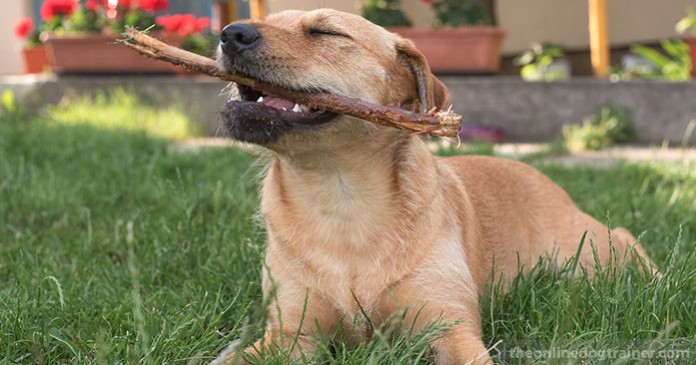
If you’ve tried everything from providing your dog with chew toys to putting him in timeouts for naughty behavior, and he’s still chewing your stuff, it’s very likely he has an underlying behavioral issue at play.
For example, your pup might…
- Be bored.
- Have anxiety.
- Have too much energy.
All of these things can cause dogs to chew—regardless of whether your dog knows it’s acceptable or not acceptable.
Let’s start with stressed or anxious dogs.
As humans, we might resort to obsessive compulsive behaviors or exhibit habits like nail-biting when we are stressed or suffering from anxiety.
Your dog might do the same, except instead of biting his nails, he might decide to eat your priceless, antique knickknack.
One of the best ways to relieve your dog's stress or anxiety is exercise.
Of course, your dog should be exercised every single day. However, if you see your dog uncharacteristically chewing on things, add an extra walk or a game of fetch into your daily routine to see if that helps.
By far the biggest cause of anxiety-driven chewing I see on a daily basis is from separation anxiety.
Curbing separation anxiety is somewhat of a complex issue, and I can’t do the process justice in this blog post.
If your dog is chewing due to separation anxiety, I encourage you to go check out one of my podcasts that talks directly about how to deal with separation anxiety.
![]()
Next, I want to talk about dogs who cannot switch off.
What I mean by this is that there are dogs who feel as if they have a job (protect the family, guard food, keep track of you/your kids) and they can’t turn off and relax because they are constantly “working.”
This often happens due to a dog feeling as if he is the one in charge in your home.
Eventually the stresses of “running” your household may lead your dog to chew in order to calm down and relax.
The solution: Make it clear to your dog that you are the provider in your home.
Once again, this is a bit of a complex issue, so I want to direct you to an article I wrote that talks about how I've helped over 88,000 relax and calm down so they can kick their bad habits.
Last but not least, your dog might be bored.
If this is the case, I recommend that you…
- Get off the couch and play with your pup more often.
- Add an extra walk into your dog’s routine.
- Ensure your dog has enough toys to chew and play with.
Even with proper training, getting your dog to stop chewing your stuff might not happen overnight. For that reason, it’s important to learn how to properly safety proof your home so that both your dog and your stuff stays safe.
I’ve put together a FREE guide for safety proofing your home, and I encourage you to give it a read.
Best of luck as you work to curb your pups bad chewing habit.
Cheers,

~Doggy Dan


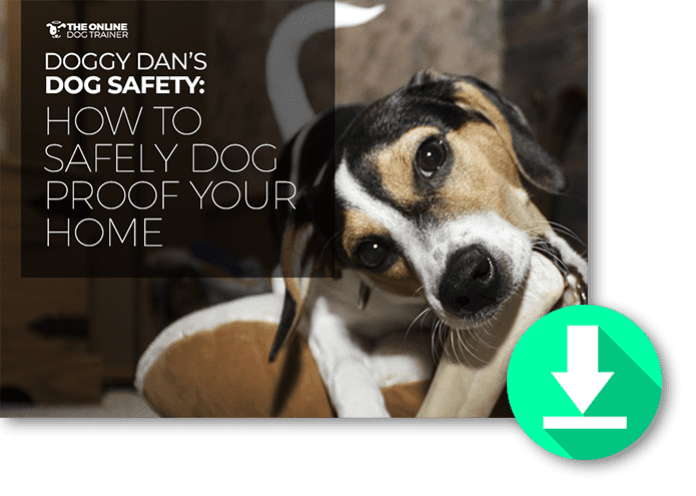


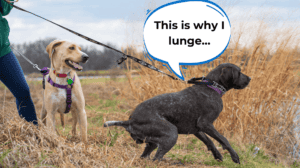
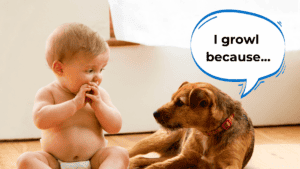
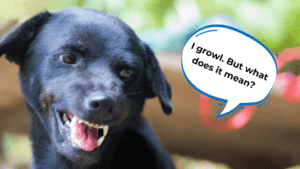
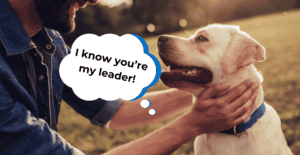
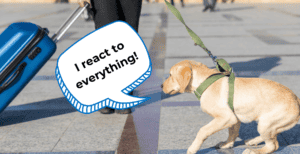
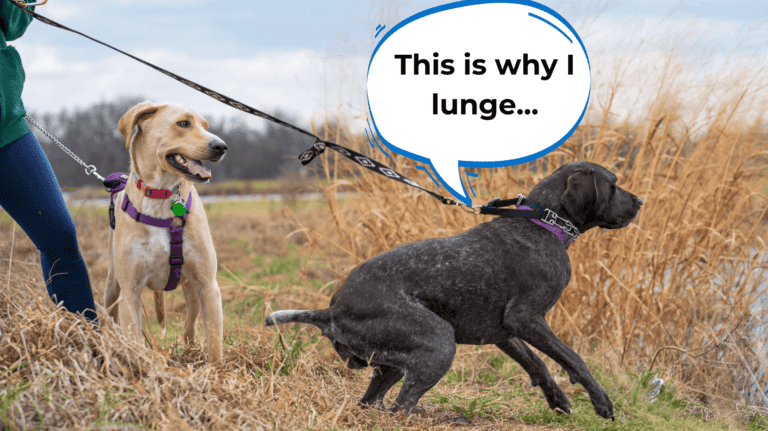
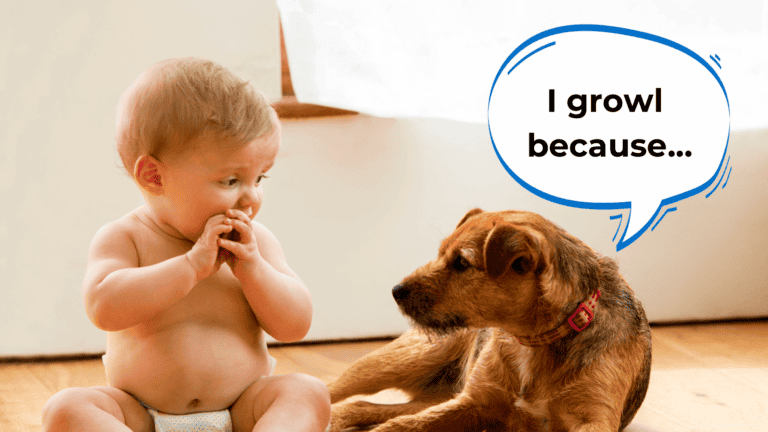
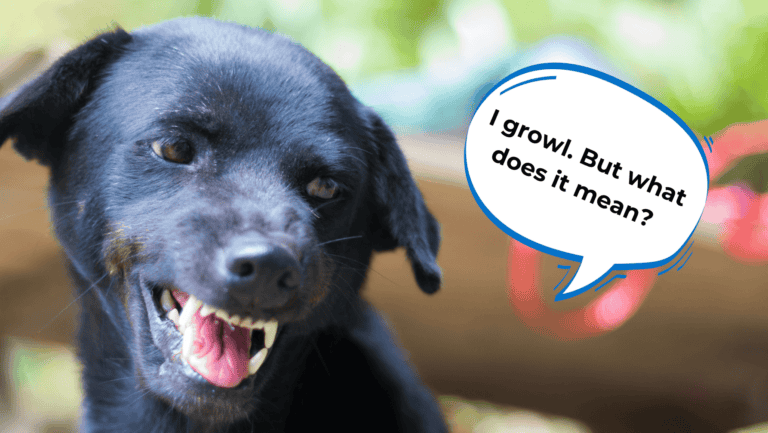

25 Responses
I have a small chihuahua that just lost her boxer friend of 12 years. I am getting a new puppy boxer. What would be the best way to introduce them. The chihuahua(Wickie) has been super spoiled since the boxer died (about 3 mo ago) and already has a selfish personality. He will still be spoiled I just do not want to devastate the puppy when he arrives. Any suggestions? Thanks in advance!
Hi Stephanie…introducing a new dog to the family can be challenging for both dogs. My biggest piece of advice is to try and make it as calm and introduction as possible…which you can do by having both dogs on-leash. It’s much safer than just letting the dogs ‘work it out’ themselves! The first aim is for them to be cal m and relaxed in each other’s presence, so avoid having them meet up close until they have reached this state…..their introduction will then go much smoother. If they have a negative reaction or start to get a bit too excited then separate them again and wait for calm to return, before trying again. It’s important not to feel rushed…..I have had dogs that need a few days (or more) to feel relaxed and be accepting of other dog in that family or coming or coming to live with them.
Prior to your new puppy coming to live with you it would be a great idea to work with your existing dog, to help him handle the transition a little better. My website TheOnlineDogTrainer.com shows you very clearly how to go about this…maybe take a quick look…its a $1USD trial for 3 days…all the best Doggy Dan
I’m grateful for your advice about keeping a dog contained when you are around it in order to prevent it from chewing on your shoes. My wife and I are thinking of adopting a puppy soon, but she has some high-heels that she doesn’t want to get ruined. These tips you shared will help us keep our footwear in good condition when we adopt the dog.
Hi Henry…I am a big believer in preparation being the key to success, so if you have a plan in place then you can avoid a lot of unwanted puppy behaviours. May I suggest that your wife also puts her favourite high heels well out of reach, dogs usually favour those if they are a shoe chewer! Best, Doggy Dan
What I did was making sure my things I give importance is out of reach. Shoes, I hanged them and gave him a toy he can chew.
That’s actually a really great strategy and one of the first pieces of advice I give to combat chewing and destruction. However it’s really important to also look at the reason behind the chewing as it can be a common symptom of behavioural issues, like Separation Anxiety. Best, Doggy Dan
Great Post, I read all the tips and found it very interesting and have a lot of vital information.
Thanks Thomas, I’m glad you liked my Bog! Best, Doggy Dan
I Think it’s Very Helpful Tips Your Dog Training –> https://k9deb.com/clicker-training/
Hey there,
I have a 9 month old American Bully. She is a power chewer. We provide lots of toys for her, but she destroys everything we give her. Any tips for indestructible chew toys? Bully sticks are great but they can get pricey.
Love your blog and emails btw! They have been so helpful during her training.
Thank you. Trista 🙂
Hi Trista,
One thing we need to consider with dogs who chew and destroy things around the house is whether or not this chewing is a symptom of a a behavioural issue…..particularly Separation Anxiety. If your dog’s chewing mainly occurs when you are out of the house and she is alone then Separation Anxiety may be the cause. Also, dogs who suffer form a general level of anxiety can display this behaviour as well. Of course there are dogs who just LOVE to chew thing too! If you are concerned that your dog’s chewing may be motivated by a behavioural issue then my website TheOnlineDogTrainer.com will be able to help you identify that…maybe take a quick look…its a $1USD trial for 3 days…all the best Doggy Dan
We have a dog who is crazy she just jumps on everyone no matter what we do time out only works for like 5 minutes and you can’t do the calm freeze because she won’t stay still just bowl you over ….. I need helppppp
Hi Britney,
One thing that springs (pardon the pun) to mind is to be really mindful of how you respond when your dog jumps up. It sounds like you’re reacting correctly but success can all boil down to the finer details. Making sure that you avoid telling your dog off, avoid making eye contact and really keep your energy level low are all key points. Some dogs can start to see this type of behaviour as a bit of a game and if they feel they are getting any pay-off (attention) when doing it then it means the behaviour continues. Also, looking at the times or scenarios where your dog does the behaviour can also shed light on why she does it in the first place. It may be after a separation or when a visitor comes over, and this means you can be proactive and have a plan in place to respond calmly and correctly. My website TheOnlineDogTrainer.com also shows you very clearly how to overcome this behaviour…maybe take a quick look…its a $1 trial for 3 days…all the best Doggy Dan
How do I stop my dog from eating his poop. I got him at six months old he is at 1 year old now. He is a Shih Tzu and thought he would out grow it. I pick it up right away but if I don’t get it all he is after it
Hi Lillian,
While eating poo can seem like a horrible behaviour, in many cases it does the dog no harm. Some dogs can view poo as a credible nutritional source and it can be one of the reasons they eat it. Obviously you do want to prevent your dog from eating other dogs poo so I would suggest walking your dog on-leash in areas where other dogs have been…just in case! Or you can do a quick survey of the area to ensure there is no poo around before allowing your dog off-leash. Ensuring that you quickly collect your dog’s poo is the easiest way to prevent them from eating it but My website TheOnlineDogTrainer.com has some other great advice…maybe take a quick look…its a $1 trial for 3 days…all the best Doggy Dan
Hi Doggy Dan!
Thank you for this impressive post. This helps me a lot on how to control my dog “siebel” from destroying stuff. She’s a siberian husky so it’s really hard as I think it’s embedded in their nature.
But that you so much!
Glad you enjoyed my Blog! Doggy Dan
Hi I have a 15 month old yorkie. I’ve had him since he was 3 months old. Since the beginning of this year he’s been off the wall. He barks at everything and anything. He still till this day will not stop barking. We recently got another puppy yorkie that’s 5 months old. We figure this would help him with his anxiety to keep him busy and be distracted by the noises he hears. Well he does calm done a bit but he’s back at it again. He’s been a little aggressive with the puppy. He plays very rough with the little guy that the puppy yelps loud cz he’s pulling his hair with his teeth. Pretty much dragging him. He’s also a few time has nibbed us when he’s a sleep. He does this when he’s laying where you need to lay. I’ll pick him up to move him and he growls and nibs.. He’s never done this before. This whole thing started way before the new puppy. Can you please help I’m running out of options for my little guy. He’s already been in Prozac and it never worked.
Hi Kim, it sounds like you have a lot going on with your dog at the moment and my educated guess is that there have been a few changes in his life of late that have caused him to become unsettled and anxious. Bringing a new puppy into the home is certainly one of those changes, but it really can be a multitude of things that may have changed in his environment that may be contributing factors to his behaviour. His behaviour is a symptom of an underlying issue and the key to calming things down is to provide him with the right information and responses to his behaviour. It’s not a difficult process a all but you do need to start by changing your behaviour a little, so that your dog can then change his. Many of the behaviours you describe are common and things we cover on my website TheOnlineDogTrainer.com …maybe take a quick look…its a $1 trial for 3 days…all the best Doggy Dan
I want to know how to train a dog, puppy, not dig and pull up plants outside
Hi Danny, there are many reasons why a dog will dig and the solution to solving the problem is to first work out what’s motivating the behaviour. Young puppies do love to dig, it’s fun and they are learning an important life skill, so if you don’t want your plants to become a victim of that then preventing unsupervised access to these areas is the most effective way to avoid an issue. Providing an appropriate place where puppies can dig and making a bit of a game of hiding their toys in there can help re-direct the behaviour. Older dogs who dig may be doing so as a result of anxiety or boredom. Whatever the age of your dog, or the cause of the behaviour, I do have other solutions to help on my website TheOnlineDogTrainer.com …maybe take a quick look…its a $1 trial for 3 days…all the best Doggy Dan
I need help. I have a Maltese Shih Tzu mix that thinks he’s 10’ tall and bullet proof. He’s 19 lbs. My son has three large dogs and the latest one is the one Bentli has issues with. She’s a pit bull catahoula mix – 79 lbs. when this dog enters the room, Bentli will attack and I’m afraid it’s only a matter of time before Rosie (my son’s dog) attacks and the results will be bad for Bentli. He is kept in a leash when my son visits. Any suggestions? Both dogs have been fixed.
Hi Connie,
Try having Bentli and your son’s dog on-leash initially when you bring them into the room together. If one of the dogs reacts then calmly remove that dog from the room until they are quiet and then try again. This will show them both how you expect them to behave when they are around each other. Only when they are both calm and relaxed would I allow them off-leash but keep an eye on them and if you see any behaviour you don’t like, then back on the leash they go. Make sure you remain calm and consistent as getting upset with dogs generally doesn’t help calm things down!
If these dogs live together and are regularly having run-ins with each other then my website TheOnlineDogTrainer.com shows you very clearly how to achieve harmony…maybe take a quick look…its a $1 trial for 3 days…all the best Doggy Dan
My Cavachaun is 1 Year old now, and she is still not housebroken. Please help. I am an older women and cannot always stay outside with her. How do I teach my little beauty to go to the bathroom outside? Thank you for all the help you can give me.
Sincerely, Emily in Ma cold
[email protected]
Hi Emily,
The key to toilet training any dog is to be consistent in setting up a good toilet routine and be proactive in taking your dog outside regularly. Initially I always like to take dogs outside more frequently than they actually need to go out, this way you avoid leaving things too late and having an accident inside. Take your dog outside and give a command word that is the signal for her to toilet, and then restrict your interaction with her to allow her to concentrate on the job at hand. If she toilets then remember to praise her so she knows she has done the right thing, but avoid telling her off if she gets it wrong! If she refuses to toilet then take her back inside after 10-15 minutes but keep a close eye on her and take her outside after a few minutes to try again. It may be a little work in the beginning but once she gets it you will be fine. Bear in mind that Urinary Tract Infections can cause a dog to have accidents indoors as well, so if you are concerned about frequent and uncontrolled peeing then a Vet checkup may be a god idea.
Dogs can also toilet indoors as a result of behavioural issues, such as Separation Anxiety or scent marking, my website TheOnlineDogTrainer.com talks about these behaviours and offers solutions…maybe take a quick look…its a $1 trial for 3 days…all the best Doggy Dan